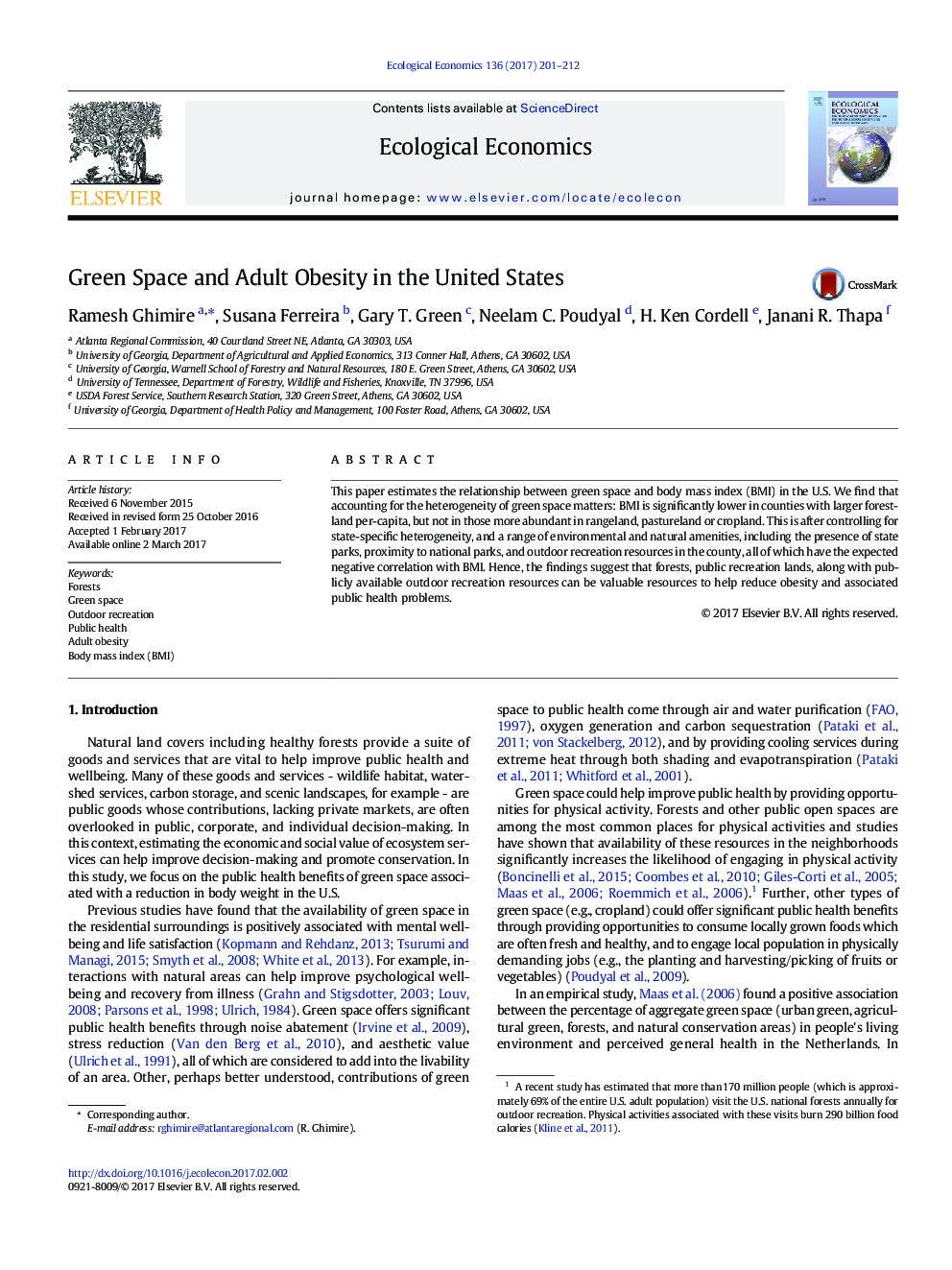| Article ID | Journal | Published Year | Pages | File Type |
|---|---|---|---|---|
| 5048722 | Ecological Economics | 2017 | 12 Pages |
This paper estimates the relationship between green space and body mass index (BMI) in the U.S. We find that accounting for the heterogeneity of green space matters: BMI is significantly lower in counties with larger forestland per-capita, but not in those more abundant in rangeland, pastureland or cropland. This is after controlling for state-specific heterogeneity, and a range of environmental and natural amenities, including the presence of state parks, proximity to national parks, and outdoor recreation resources in the county, all of which have the expected negative correlation with BMI. Hence, the findings suggest that forests, public recreation lands, along with publicly available outdoor recreation resources can be valuable resources to help reduce obesity and associated public health problems.
